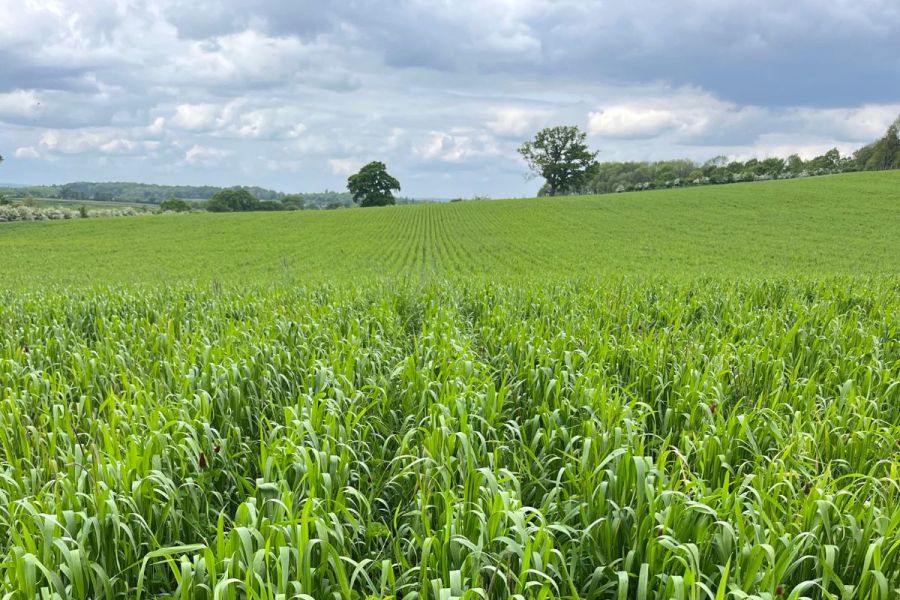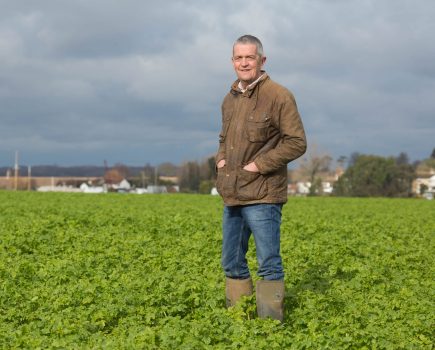By Lucy de la Pasture
So much has changed in farming recently. While there’ve been relatively few substantive tweaks to conventional agronomic practices for decades, and fewer still step-changes in crop protection, there’s been a huge change in mindsets, embracing farming in a more nature-friendly way which, quite frankly, would not so long ago been regarded as being a bit new-age and hippy.
Regardless of whether or not this is a route you’re already on, are thinking about, or wouldn’t consider it in a thousand years, the farmers who are pioneering regenerative approaches are incredibly interesting and motivational. To engender such passion, they must surely be doing something right. And what could be better than combining your values with a profitable business model. Happiness is something to cling on to in farming these days with all its many stresses.
So it’s with no apology that in this special issue we’re shining a spotlight on sustainable farming practices, whatever that means to you, from variety selection to Wildfarmed to the connection between healthy humans and healthy soil and, more particularly, the biology therein, to Green Farm Collective to Vine House Farm to information on pollinators gleaned from the Allerton Project, and all the various shades in between.
Farmers have been price takers for far too long, taking all the risk in an increasingly volatile environment – both in weather and markets – so it’s great to see some pioneers taking back control (I hesitate to use that expression with all of its Brexit connotations, but it does seem fitting), adding value to their produce, shortening supply chains and getting closer to their customers.
It may be a small shift but it’s an important one nonetheless – the impossible now seems possible. Admittedly, there’s still a long way to go before the majority of consumers think about food in terms of its nutritional value rather than its monetary value, but perhaps the citizen science that will link nutritional quality with the way food is grown may just start to create some traction, at least to those who care. To back up the value of wholesome food production, some long-term government thinking wouldn’t go amiss to consider the future healthcare savings if its populace could be weaned off heavily processed and sugary food…
This issue is almost my last hurrah as editor of CPM, as after more than eight years of writing for the magazine, I’m stepping down next month to allow myself more time to devote to my own rapidly growing business – though I still plan to write. CPM is a more than full-time job and I’ve come to realise I’m killing myself slowly by trying to do too much!
Being editor of a print magazine is sometimes a lonely place and can be like shouting into an echo chamber – do you, the readers, like the content I’ve decided to run with? With that in mind, I really appreciate all who have bothered to send an email over the past couple of years to tell me what you think of the direction I’ve taken the magazine. I’d be particularly interested to know what you think of this issue as its content is especially dear to my heart.
I’d also like to thank every single farmer, agronomist, researcher and company representative who has made the time to speak to me over the years – even when incredibly busy with far more pressing things – to share their insights, experience and passion. And also the fantastic team of journalists that support CPM and do the hard yards to tell these stories. It has made my job very easy.
Perhaps it’s the sharing of information that marks one of the biggest changes in mindset in the farming community. Getting ahead of your neighbour has become an outdated philosophy, replaced by a will to learn together, share when things went wrong as well as when they went right. No longer mistakes but experiences that aided learning and can help others get from A to B quicker. This is the power of the farming community, the power that could transform food production, and one that’s particularly evidenced by the regenerative farming community and, in particular, some of those who feature in this issue.
Although the gap still yawns between consumers and food production, something our regen pioneers have in common is that they’ve engaged with the supply chain – be it Wildfarmed or Green Farm Collective. Not only that, they aren’t just creating markets for themselves, they’re taking fellow farmers with them as they work to create new markets, fanning the flames of a spark that could one day change our food chain. At the latter’s recent open day, NGOs were well represented, along with supply chain intermediaries – it can only be a good thing that the more environmentally conscious way our food is being produced is attracting attention.
Are we witnessing the embers of a revolution? It will be interesting to find out…
This article was taken from the latest issue of CPM. For more articles like this, subscribe here.
Sign up for Crop Production Magazine’s FREE e-newsletter here.




